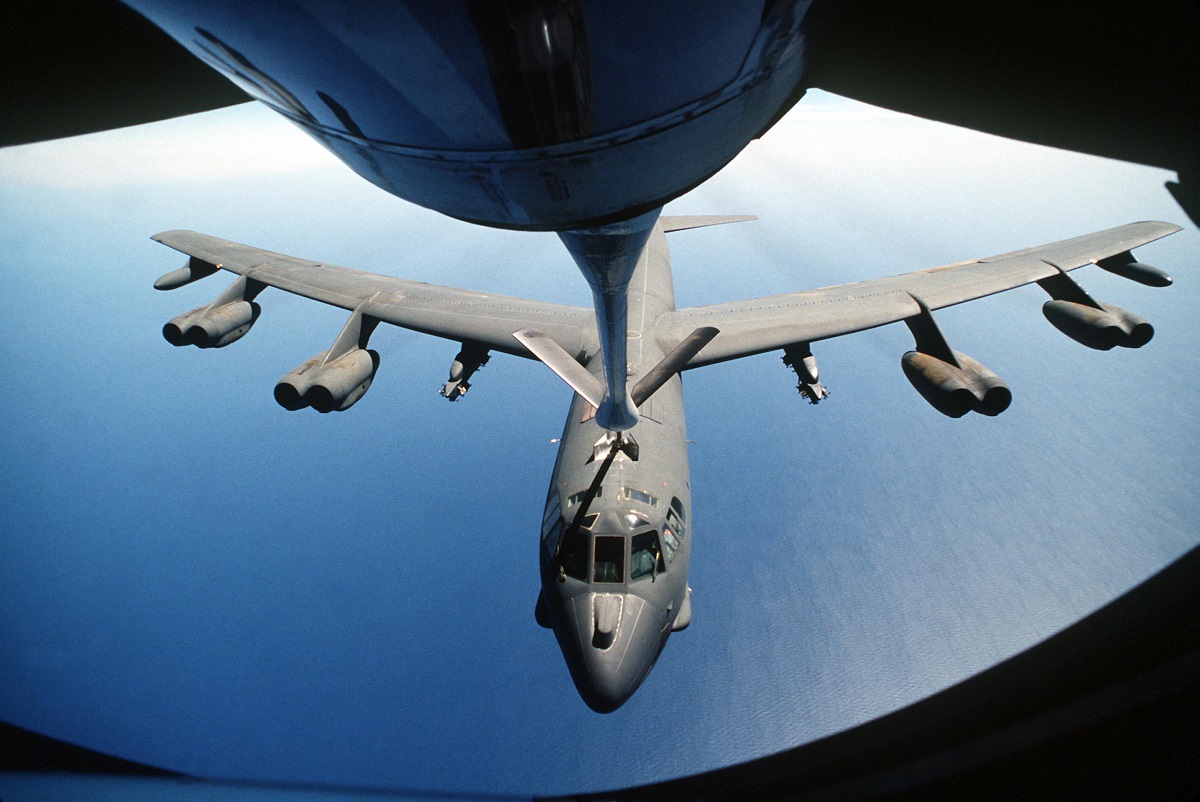Saddam Hussein’s troops had invaded the neighboring country of Kuwait, and Secret Squirrel prepared the way for American forces to overthrow him
In a single, secret mission that would launch Operation Desert Storm, the U.S. Air Force (USAF) sent seven B-52G Stratofortress aircrew from the 2nd Bomb Wing (BW) to Iraq early on January 16, 1991.
This first salvo, carried out by the 596th Bomb Squadron (BS), made it possible for American forces to overthrow Iraqi tyrant Saddam Hussein, whose forces had invaded the neighboring country of Kuwait. The covert mission was known as Operation Senior Surprise by the then-Strategic Air Command (SAC).

SAC oversaw the effort known as Operation Senior Surprise during Operation Desert Shield. The operation was officially known as Senior Surprise, but the aircrew and maintainers ingeniously came up with the name Secret Squirrel so they could keep track of timetables and talk about the mission in unclassified areas.
A limited group of airmen and maintainers from the 596th Bomb Squadron (BS) were instructed on the use of a novel type of weapon, the Conventional Air Launched Cruise Missile (CALCM), in battle at the beginning of Desert Shield.
“I was first informed of the mission in August 1990 and then had six months to train on the new weapon. We couldn’t tell anybody anything,” explained Warren Ward, Air Force Global Strike Command (AFGSC) deputy chief of programming division and 596th BS B-52G Stratofortress co-pilot, during Operation Senior Surprise. “The 62nd BS and part of the 596th BS were largely deploying forward yet a large portion of the 596th stayed at Barksdale. We were watching our brothers in arms going forward, yet we were staying back. We had to work under a veil of secrecy.”

The parties started rigorous training after being briefed to make sure the aircraft could fly long-range missions safely and flawlessly.
On the morning of January 16, 1991, seven B-52G Stratofortresses from Barksdale Air Force Base (AFB) launched 35 of the brand-new AGM-86C CALCMs at Iraqi targets, decimating Saddam’s army and damaging critical communication equipment, and then secretly made their way back.
Additionally, it was the first time that a missile had ever been guided to a target using GPS.

When he participated in the Secret Squirrel mission as a B-52G electronic warfare officer, Col. Trey Morriss, vice commander of the 307th BW, was a brand-new captain.
“The Secret Squirrel mission was used to blind Iraq by eliminating certain power and communication nodes throughout the country. This severely hampered their response in the initial phase of the war,” Morriss pointed out. “We proved to U.S. citizens, our allies, coalition partners, and even to our enemies that we will do what we say we’re going to do. In doing so, we solidified the B-52 in the realm of long-range strike capability.”
“The B-52 provides a great first-strike capability in any conventional war,” Morriss said. “It gives us the ability to degrade the enemy with the first attack and press in with other capabilities. We also proved to the world that we were on the threshold of a new type of modern warfare with GPS-guided weapons. The results speak for themselves.”

When flying to the Middle East during “Secret Squirrel,” the BUFF (Big Ugly Fat Fucker, as the B-52 is known) aircrews faced unforeseen risks but remained confident in their training. These dangers included the possibility of hostile action, landing on friendly territory that might not have been ready for U.S. military aircraft, and a variety of system malfunctions with the aircraft itself.
“The risks were the unknown,” explains Russell Mathers. who took part in Secret Squirrel as a B-52 copilot “We didn’t know if anyone was going to take a shot at us.”
The longest combat sortie flight was Secret Squirrel, which covered 14,000 miles in 35 hours and 24 minutes. Additionally, the covert operation established the standard for the long-range strike.

According to Mathers, SAC gained important knowledge regarding long-range combat missions as a result of Desert Storm. “What we learned as a bomber community is that the bomber is still a huge viable weapons system. We also learned how difficult it is physiologically, to fly these missions and prepare the human body to fly 30 or 40-hour missions.”
The B-52 continued to play a crucial part in Desert Storm operations after “Secret Squirrel” launched operations. A total of nearly 70 B-52G crews flew 1,741 missions for 15,269 combat hours, dropping 27,000 tons of ammunition.

AFGSC program analyst Jim Bowles participated in Desert Storm as a B-52 instructor pilot and aircraft commander. According to Bowles, it was a blessing to be flying with a copilot, radar navigator, electronic warfare officer, and gunner who were all instructors in their respective fields. “We knew our aircraft, and we knew our training. While there was some apprehension about going into combat and the potential of not coming home, there was also confidence because we knew we could do our mission. When I look back on Desert Storm, it feels like yesterday. It’s a memory deep within myself and my family. It’s a defining moment that shaped me for the rest of my Air Force career.”
Prior to being awarded air, accomplishment, and commendation medals on January 16, 1992, the aircrew members and maintainers who made Secret Squirrel possible remained secret.

Source: Senior Airman Benjamin Raughton, 2nd Bomb Wing Public Affairs and U.S. Air Force; Photo by U.S. Air Force

